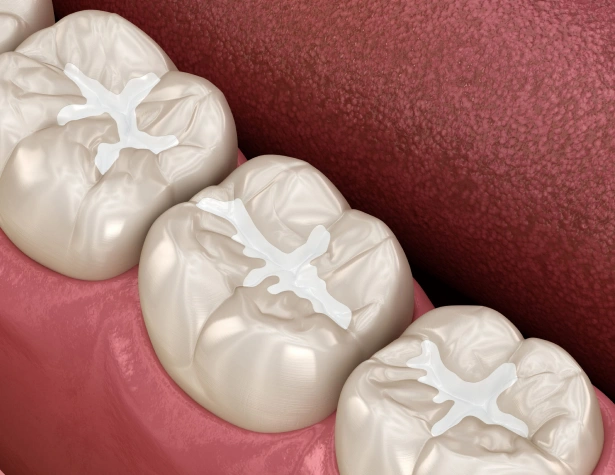
Protect Your Teeth with Dental Sealants
Dental sealants are a thin, protective plastic coating applied to the chewing surfaces of molars, premolars, and other teeth with deep grooves—areas where more than 75% of dental decay typically begins. These grooves, known as pits and fissures, are difficult to clean and highly vulnerable to cavities.
Sealants work by filling in and sealing these grooves, creating a smooth surface that is easier to clean and less likely to trap food and bacteria. While sealants can offer long-lasting protection against tooth decay, they should be checked regularly during dental visits for signs of wear or chipping to ensure they remain effective.
Reasons for Sealants:
Sealants provide an extra layer of protection against cavities by covering deep grooves and pits in teeth that are prone to decay. They are especially beneficial for children, teenagers, and even some adults or cavity-prone baby teeth. Below are the key reasons for getting sealants:
- Children and Teenagers: Ideal candidates as soon as the first permanent molars (typically around age 6) erupt, and throughout the cavity-prone years of ages 6 to 16.
- Adults: Suitable for teeth with deep grooves or pits that do not yet have decay.
- Young Children (Baby Teeth): In some cases, sealants may be applied if baby teeth have deep grooves and the child is prone to cavities.
What Do Sealants Involve?
Dental sealants are quick and painless to apply, taking just a few minutes per tooth. First, the teeth are thoroughly cleaned and dried, then surrounded with cotton to keep the area dry. A special solution is applied to roughen the enamel surface, helping the sealant bond more effectively. After rinsing and drying the teeth again, the sealant is painted onto the chewing surfaces to fill deep grooves or pits. It hardens either on its own or with the help of a curing light, depending on the type used.
To maximize the life of your sealants, it's important to maintain good oral hygiene, eat a balanced diet, and visit your dentist regularly.

